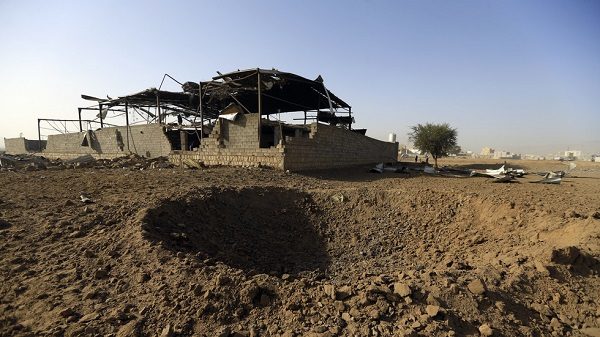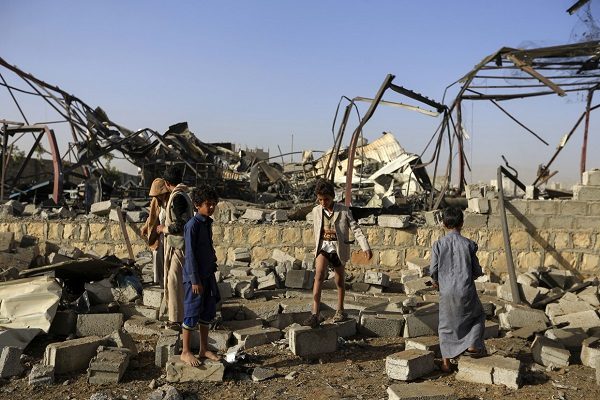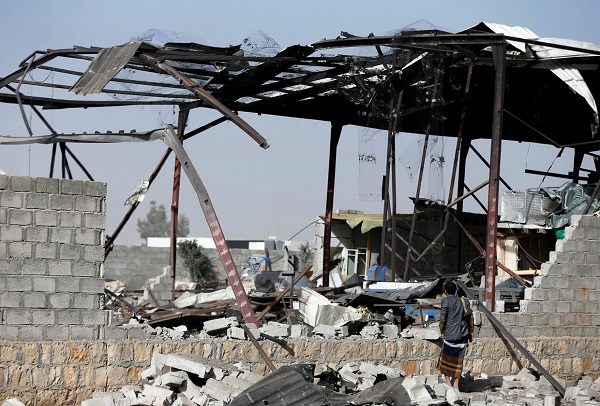
Coalition warplanes struck several targets across the Houthi-held city in raids on Saturday evening, including training camps, drone storage facility, and Al-Dulaimi Air Base, its statement said according to Saudi media.
Houthi media countered the Saudi narrative on Sunday, stating that non-military sites hit by coalition aircraft included residential homes and civilian factories. In all, 24 separate assaults were made across the capital, including four at the air base.
Immediate casualties from the strikes are unknown; however, witnesses told Reuters that at least two people were killed, while others were injured.
Describing the raids as "very violent," one resident told the news agency that the airstrikes were the worst to hit the city in a year.
"The house shook so much we thought it would fall on our heads," he added.
Footage and pictures of the strikes posted to social media show the intensity of the payloads dropped which lit up the night sky. Others show a dangerous inferno that broke out at a plastics factory after it was bombed.
Condemning the attack, senior Houthi officials slammed the assault as a joint "US-Saudi" act of aggression, and accused Washington of having "directed and prepared" the wave of strikes.


It's estimated that one-third of coalition bombing missions strike non-military targets, including schools, markets, and mosques, according to data collected by Al Jazeera and the Yemen Data Project.
Sunday's strikes are the first the coalition has carried out on the city since a fragile truce agreement was brokered by the UN in Sweden last month between the Houthi rebels and the Yemeni government backed by Riyadh. The deal was the first real effort towards lasting peace for factions that have been at war since 2014.
However, the renewed escalation in violence comes following a Houthi drone attack against a government military parade last week. The assault killed at least six, including the commander of military intelligence.
It also raises concerns about possible advances in a second round of UN-sponsored peace talks due for the end of this month.
A sticking point in the negotiations has centered around control of the Houthi-held port city of Hodeida, where the vast majority of Yemen's aid and imports enter the country. While December's truce prevented an all-out coalition assault on the city, disagreements remain over who should control the city once the Houthis fully withdraw.
Recent estimates by the Armed Conflict Location & Event Data Project (ACLED) say that over 60,000 people have been killed in Yemen between January 2016 and November 2018.
The group also say that due to famine reported in several areas, a further 85,000 may have died as a result of malnutrition and related diseases.



Reader Comments
to our Newsletter